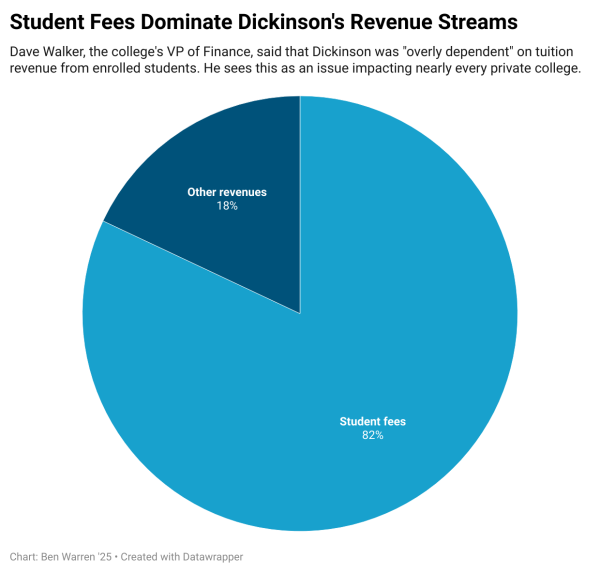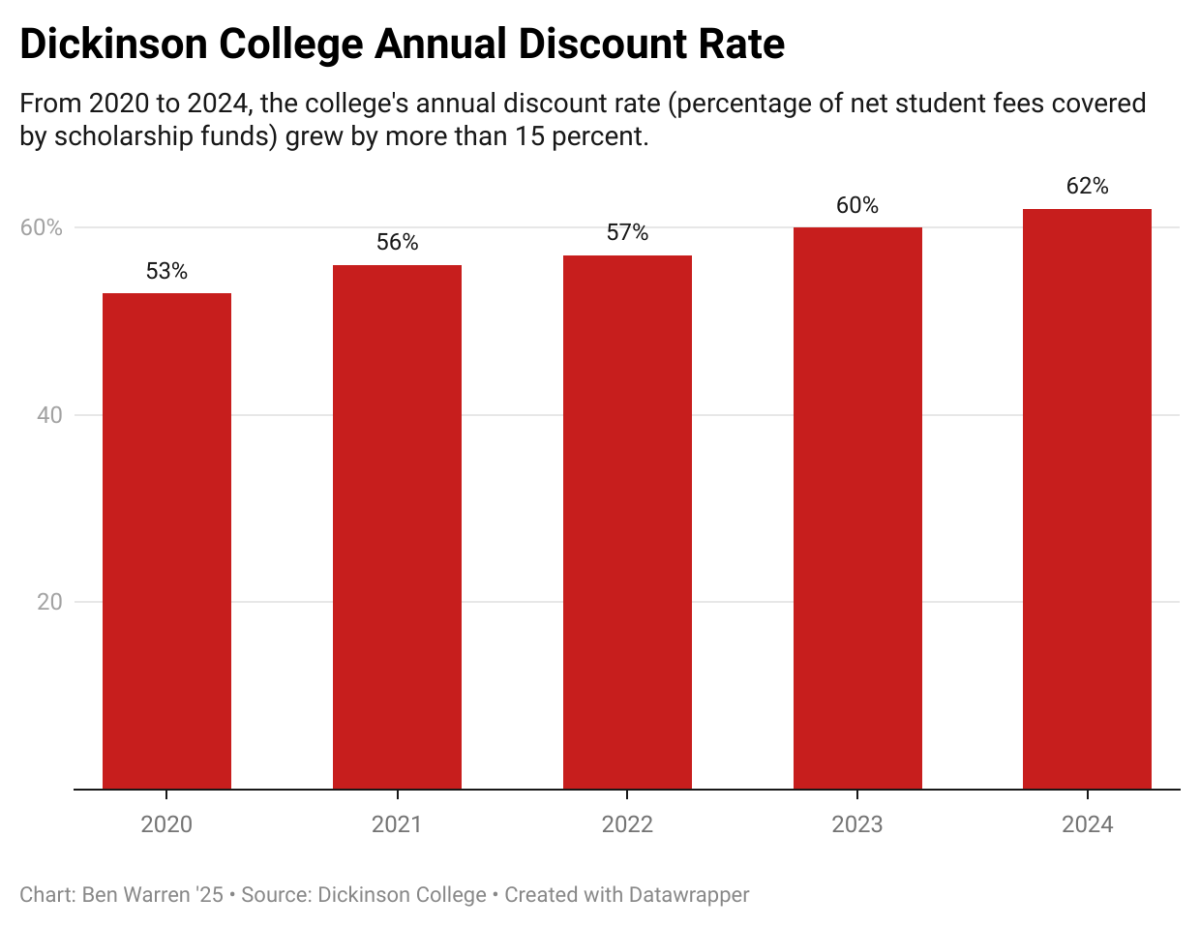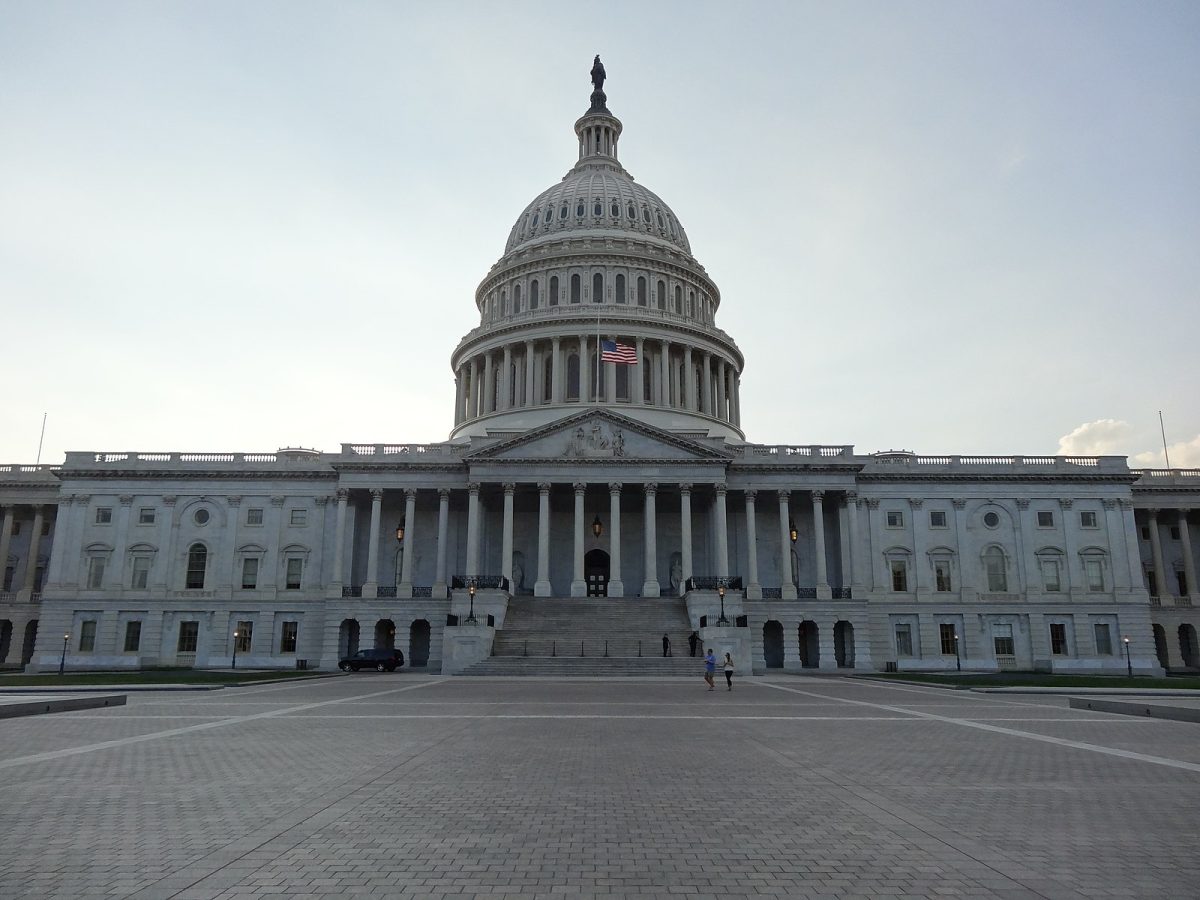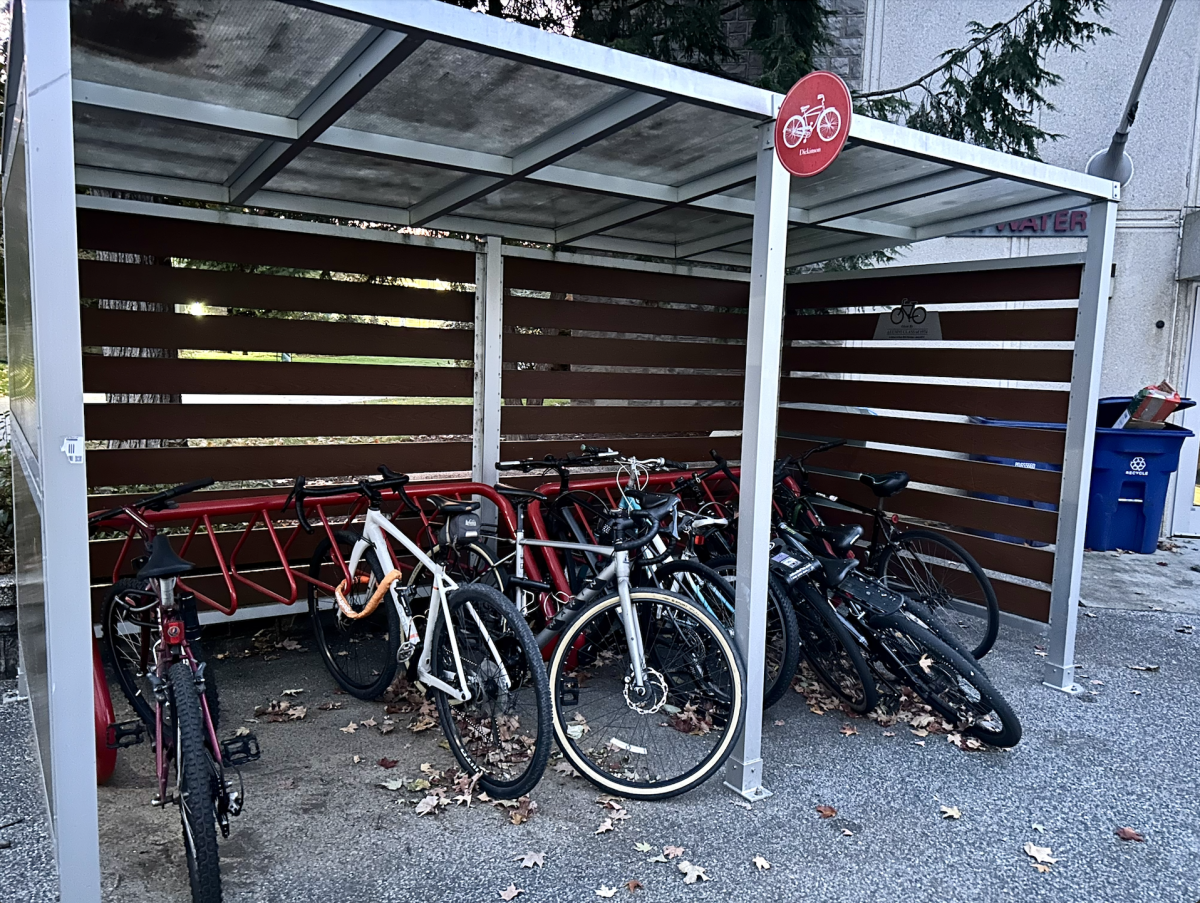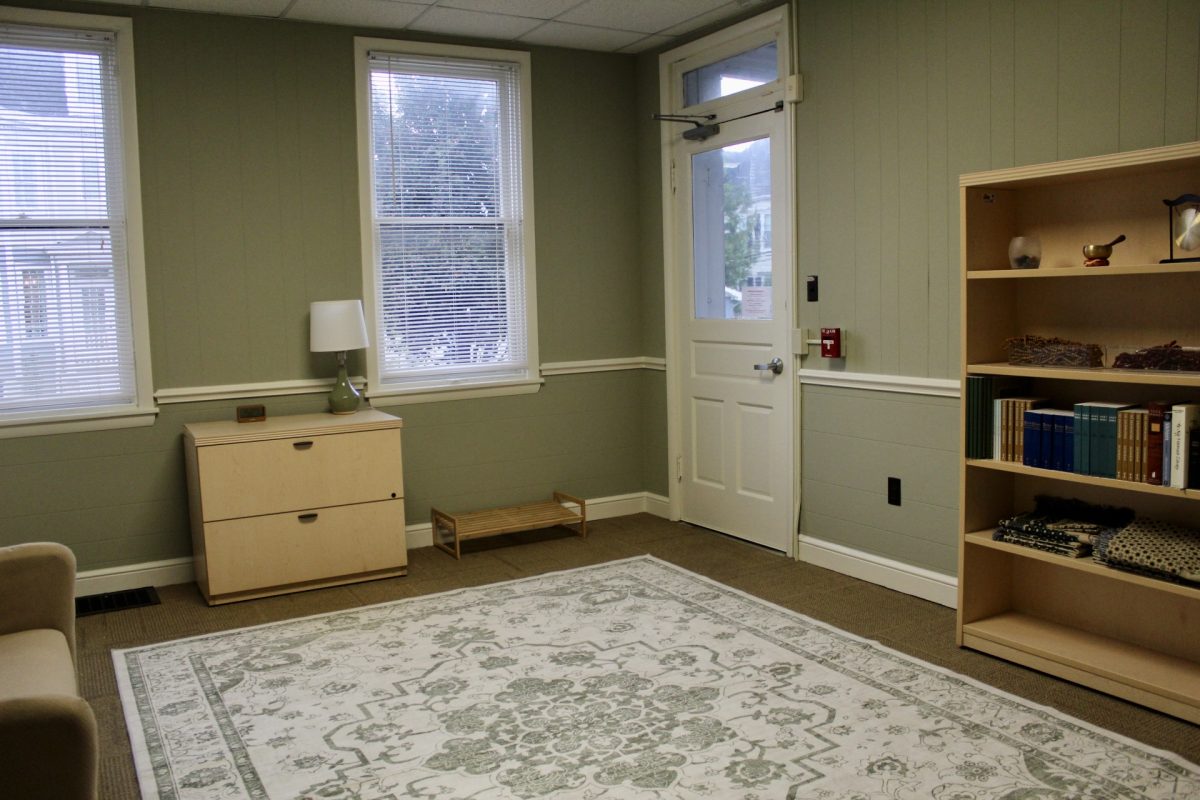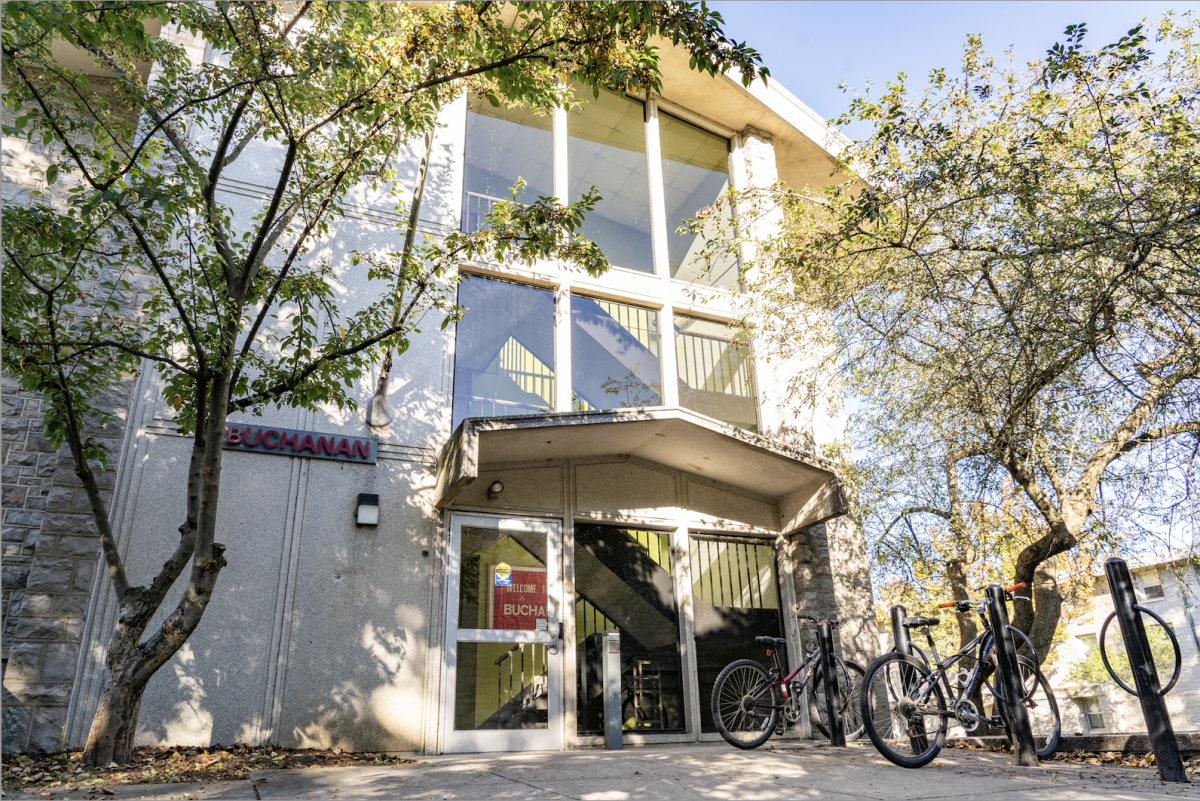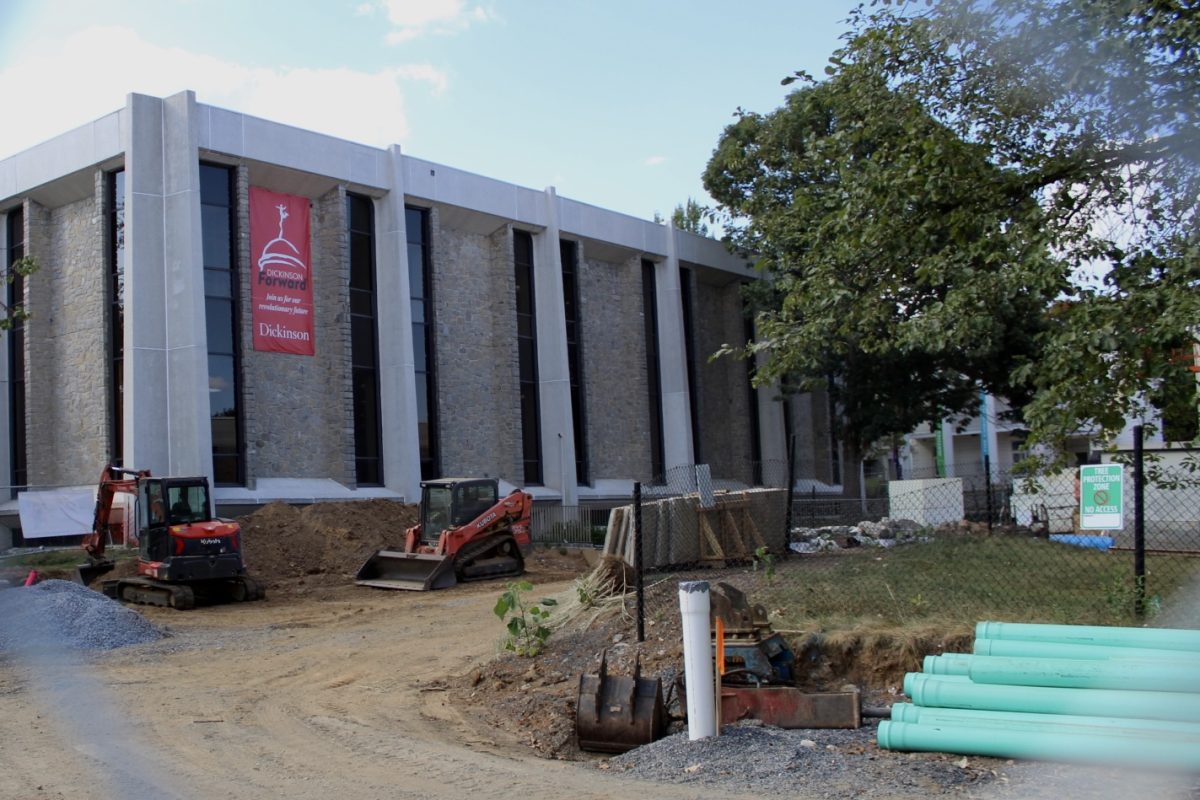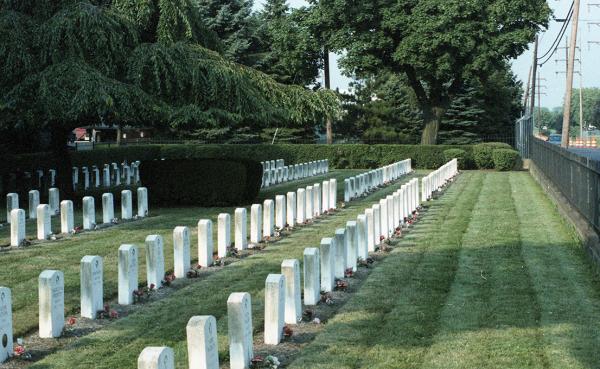Dickinson plans to enroll fewer students at a lower discount rate over the next five years, according to multiple interviews with senior staff at the College.
The College’s enrollment goals for the first-year class will be around 575 students for the foreseeable future, down more than 10% from the 650 students who enrolled this year, said President John E. Jones III. His administration also plans to reshuffle financial aid, focusing more on need-based than merit-based aid.
One of the reasons for such high enrollment recently is due to “oscillating” enrollment as a result of the COVID-19 pandemic, said Seth Allen, the college’s VP for Enrollment Management and Dean of Admissions.
The discount rate is the proportion of tuition paid by students at the College that is not covered by scholarships or grants. The College’s discount rate has increased more than 50 percent in the last decade.
Allen emphasized that there are two goals of the enrollment and discount rate projections. The first is to remove the unpredictability of enrollment in previous years and the second is finding a “healthy balance of net revenue” compared to the discount rate.
A lower discount rate does not mean that every student at the college will receive less scholarship money. “We are still 150% committed to meeting full demonstrated need,” said VP of Finance Dave Walker.
Instead, the college plans to decrease the amount of aid given via “merit scholarships,” worth between $15,000 and $35,000 per year. Dickinson awards these scholarships “to recognize exemplary academic performance,” and financial need is not considered in the process.
Allen expressed concern that the amount the college allocates to merit scholarships has grown rapidly. He hopes Dickinson will return to giving merit aid to the most “meritorious” students who demonstrate academic excellence in high school and have a great anticipated impact on the campus community.
Walker advocated the shift to more need-based aid, saying “we are arguably buying some of our students” by providing large merit scholarships to students who have a greater ability to pay tuition. Instead, he said, “we want to swing the pendulum the other way,” increasing the investment in financial aid grants for lower-income students.
Siobhan Phillips, Professor of English and the chair of the all-college Planning and Budget Committee, called the shift a “rebalancing.”
“Students who know Dickinson is their first choice and can afford to pay more might not get as much as before,” she said. Phillips emphasized the importance of proving the value of a Dickinson education. “We think what we’re offering is incredibly valuable.”
The average need-based grant in the 2023-24 academic year was worth around $50,000, covering three-quarters of yearly tuition or around 60% of the total estimated cost of attendance at Dickinson.
Phillips noted a tendency to think that higher enrollment is always a good thing. “There’s a limit there,” she said. She pointed to strains on the college’s faculty, class sizes and living spaces caused by several consecutive years of enrolling more students than expected.
This fall semester, some first-year seminars enrolled more than the usual 16-student cap. The large incoming class also led the college to rent several additional apartments in Carlisle to cover the need for more student housing.
Walker raised another concern about operating with higher enrollment numbers: the “birth dearth.” Experts have long seen the dip in birth rates around the 2008 financial crisis as a major challenge for colleges, especially on the East Coast. Institutions like Dickinson will compete for a smaller number of students, putting a strain on the financial bottom line.
Ultimately, said Jones, the college must reduce merit aid and prioritize financial need to increase net tuition revenue per student. “No college can survive if the discount rate creeps over 70%,” he said.
The challenge that lies ahead, according to Phillips, is to make the case to students from all economic backgrounds that a four-year residential liberal arts college experience is for them.
“We have to continue to specify and explain and celebrate what happens at Dickinson,” she said.